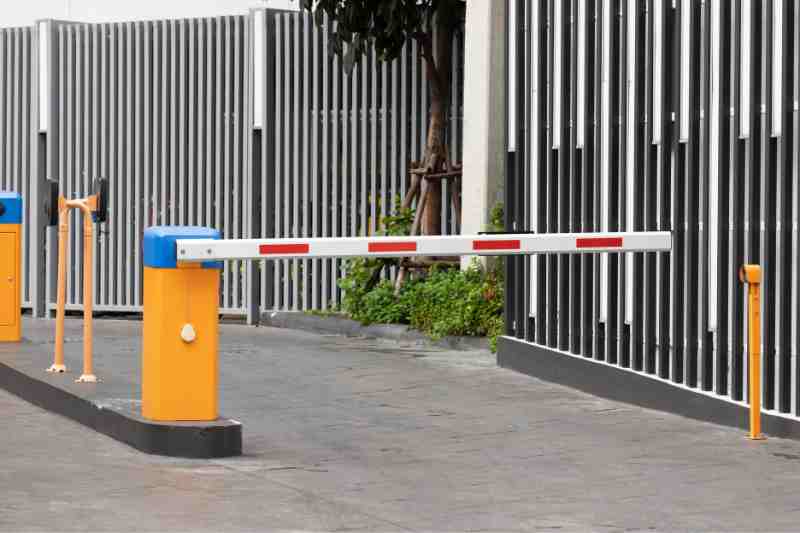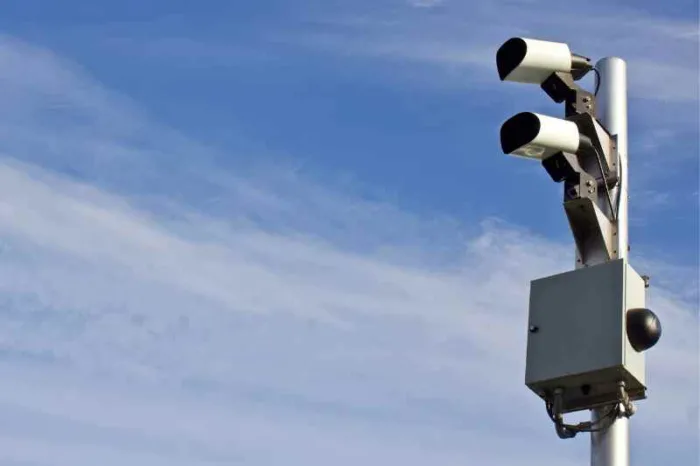Key takeaways
- A license plate reader is a camera that captures still and video footage of every vehicle’s license plate as it passes the camera.
- LPR cameras were developed for use by law enforcement. However, in real estate, LPRs can be used to control access, deter crime, and identify unauthorized visitors.
- The best places to install LPR cameras include property choke points, gates, entrances, and exits.
- The best alternative to a license plate reader camera is a vehicle access control system.

Technology has slowly but surely become integrated into all aspects of real estate. So, it’s no surprise that high-tech security solutions have begun to spring up. Many properties are opting to invest in license plate reader (LPR) cameras to boost security and control access.
In this post, we explore this emerging security technology. We define what license plate readers are and how they enhance security. Then, we go over the pros and cons of an LPR camera system.
This post covers:
- How do ALPRs work?
- What is the purpose of a license plate reader?
- How accurate are license plate readers?
- Pros and cons of LPR cameras
- What are ALPR alternatives?
How do ALPRs work?
ALPRs are devices that can scan and capture a passing vehicle’s license plate, as well as the time and date it passed by.
You might find a license plate reader installed at:
- Entrances to gated properties, parking garages, and other entrances to control vehicle access.
- Traffic lights or intersections to catch traffic violations.
- Police departments and police vehicles to catch alleged perpetrators of crime.
A security camera can take photos or videos whenever a license plate moves through the frame. However, only a certain type of camera can capture and read license plates and put those plate numbers into a database.
As a busy property manager or owner, you probably don’t have time to sift through hundreds of photos of license plates. With a license plate recognition camera, photos and license plate numbers are uploaded into a database that can be searched and accessed quickly.
So, when you need to locate a specific plate number, an LPR will save you from hours of searching.
How much does a license plate reader cost?
On average, a license plate reader costs between $400 and $1,000. However, the exact price will vary based on several factors.
These factors include:
- The company you purchase your LPR from.
- The size of your property and the number of LPR cameras you invest in.
- How robust the system you purchase is.
Further, an LPR camera by itself is significantly cheaper than an LPR with license plate recognition technology.
What is the difference between license plate capture and a license plate reader?
A license plate capture is the process of an LPR camera capturing a photo of a license plate number.
Conversely, a license plate reader goes a step further, using that photo to identify the plate number and store it in a database.
A license plate reader uses license plate recognition technology to associate a plate number with a person. As a result, if a break-in is traced to a certain plate, you can provide this number to law enforcement in order to identify the perpetrator.
Learn how to manage visitors with vehicle access control:
What is the purpose of a license plate reader?
The purpose of a license plate reader is to enhance the security of your property – whether it’s commercial or residential.
Over the last decade, technology has significantly boosted security efforts. But it’s also made thieves more clever. As a result, old-school security measures simply don’t cut it anymore.
However, installing an LPR system means your property has security 24/7, even on holidays.
When should you install a license plate reader?
So, you’re interested in investing in an LPR for your property but unsure whether your property needs one.
Some reasons you should invest in an LPR include:
- To reduce tailgating in your community.
- If your property has seen a large number of break-ins.
- If your property experiences high numbers of unauthorized visitors entering the property in cars.
- To control or restrict access to authorized vehicles only.
Where should you install an LPR?
Deciding where to install a license plate recognition reader depends on where vehicles will be moving through your property.
Here are the top spots to install LPR cameras:
- Choke points. These are places throughout your property where cars have to move in one direction. For example, small driveways and pathways inside parking garages.
- Entrances and exits. Capture the exact time a specific license plate entered and left your property by placing cameras at entrances and exits.
- Gate access control. Any gated area where cars must slow down is a great spot to place your LPR camera.

How accurate are license plate readers?
Most LPR cameras have at least a 90% accuracy rate. However, the best license plate recognition technology accurately logs 98% of license plates.
When choosing an LPR and judging whether your LPR is reliable, the closer your accuracy is to 100%, the better.
Pros & cons of LPR cameras
Pros:
- An automated license plate reader camera can capture and log license plate numbers. As a result, security monitoring is streamlined and made significantly easier.
- The best license plate reader cameras offer still and video footage. So, your security footage is doubled, and security is enhanced.
- Having security cameras of any type installed on your property is a deterrent to potential criminals.
- LPRs reduce the need for manned security, such as guards and safety patrols.
- LPR systems can be used as an access control system to allow only authorized vehicles to enter a property.
Cons:
- Typically, license plate readers are used by law enforcement. As a result, tenants may feel uncomfortable if LPRs are installed at their homes or jobs.
- In intense weather conditions, such as ice, snow, and rain, LPR cameras may not be as effective. While they will still capture footage, the footage will likely be obstructed.
- Further, the most common complaint faced by property managers and owners who opt to install license plate readers concerns privacy. Tenants may feel their privacy is unprotected if they’re under surveillance.
What are ALPR alternatives?
The best alternative to a license plate reader camera is a vehicle access control system. The benefit of a vehicle access system is that it not only monitors parking safety but also enhances the vehicle entry system for tenants.
The ButterflyMX vehicle access control system is a streamlined vehicle entry system that’s simple to use. First, each user places a windshield tag on their vehicle. Then, they’re granted entry when the ButterflyMX vehicle reader scans their tag.
More features of the ButterflyMX vehicle access control system include:
- Highly-rated smartphone app with the swipe-to-open button
- Time-and-date stamped audit trail
- Remote access and dashboard management
- Wide-angle camera and two-way video calling
- Well-lit LED screen







